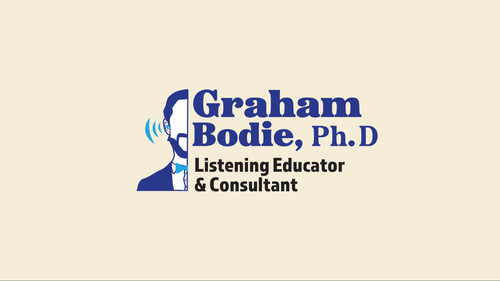Myth Busting
Myths surround us. Trying to escape them is as futile as trying to cheat death or breathe under water (regardless of your ability to do so while dreaming). Myths are part of our history and of our present, and they are likely to serve important functions in our future. As someone who studies listening for a living, I am continually fascinated by all of the things we believe about this important human skill. Below is my attempt to summarize what I have come to understand about a “right” way to think about (and believe about) listening. If you want to skip all the background, you can go straight to the 10 Myths of Listening by clicking here.
What is a myth?
I like to think of myths as ways people have tried to explain things they don’t understand. These explanations then get passed down from generation to generation through stories. Those stories help make our world more understandable; they help us make sense out of the senseless. Ultimately, we create and perpetuate myths because they seem to help us come to truth – some sort of understanding of the world around us.
We believe lots of things about human communication
Our understanding of human communication is particularly rife with myths. While there are tons of academic studies that support the importance of communication for a range of outcomes like healthy relationships, making quality decisions, and success at school and work, chances are you have not read many of them. Even if you have, there is still a high probability that your understanding of what constitutes “high quality speaking and listening” comes from a non-academic source.
My favorite philosopher, Charles Sanders Peirce, wrote extensively about how we “fix” our beliefs, most notably in his 1877 Popular Science Monthly article, The Fixation of Belief. In that article, he outlined four primary ways that we move from a state of doubt to a state of belief.
Although he listed it last, the scientific method was Peirce’s recommended way of understanding the world. In this way of fixing belief, we make a rigorous attempt at truth so that “our beliefs may be determined by nothing human, but by some external permanency.” In other words, what we believe is only true if we can support it with objective evidence. Grounding our beliefs only in personal experience simply won’t do. What may be true for me may not be true for you.
Each of the other three methods for fixing belief that Peirce outlined, while having “some peculiar convenience of its own,” ultimately fails to generate true belief.
The method of tenacity involves holding a belief without wavering and the resolve to continue to believe that thing irrespective of counter-opinions.
The method of authority involves the will of the state or some other institution determining correct doctrine and teaching that doctrine to each new generation.
The a priori method involves people “conversing together and regarding matters in different lights” all of which results in a “natural” development of “beliefs in harmony with natural causes.”
In slightly less esoteric language, Lilienfeld, Lynn, Ruscio, and Beyerstein listed 10 reasons we can be fooled by logical sounding claims in their book 50 Great Myths of Popular Psychology: Shattering Widespread Misconceptions about Human Behavior:
-
When we hear things a lot they sound more believable.
-
It is much more desirable to do little and gain lots than to do lots and gain little.
-
We see things selectively (full moon and psychiatric hospital admissions; my knee hurts right before it will rain), from our own perspectives; we are more prone to notice difference than similarity.
-
Eating ice cream and drowning are correlated with each other; therefore, eating ice cream causes people to drown. The third (“confounding”) variable we ignore? Hot weather, which increases both ice cream consumption and swimming (and therefore drowning).
-
After this, therefore because of this; just because A comes before B does not mean A causes B. I left the house 5 minutes late which caused me to be stuck in traffic – maybe so, but not necessarily; perhaps traffic has been bad all morning due to a wreck.
-
Ask a mechanic what type of car to avoid buying, and they might say something like, “Well, I see more Chevrolets and Fords than any others.” Indeed, those cars are popular, and, thus, there are more of them; it’s the law of averages not necessarily that buying a Ford or Chevrolet is a bad idea.
-
Evaluating similarity based on superficial resemblance; people standing with their arms crossed are closed off and interpersonally cold.
-
Lie to Me – we can detect lies by looking only at nonverbal leakage; She’s not that into you; old Disney films (e.g., Little Mermaid) are perhaps the worst offenders.
-
Sex differences in communication fall into this bucket. While there are differences, on average, between the communication preferences and patterns of men and women, most of those differences are not that big.
-
We use common or lay definitions of words when thinking about things labeled several years ago with particular purposes. Extraversion, for instance, is not going out and partying or being the “life of the party,” but a biological predisposition to be not-easily-aroused. It is the need for greater physiological stimulation compared to introversion where arousal comes more easily (and this can have something to do with the number of people or loudness of noises but those things are not perfectly related).










